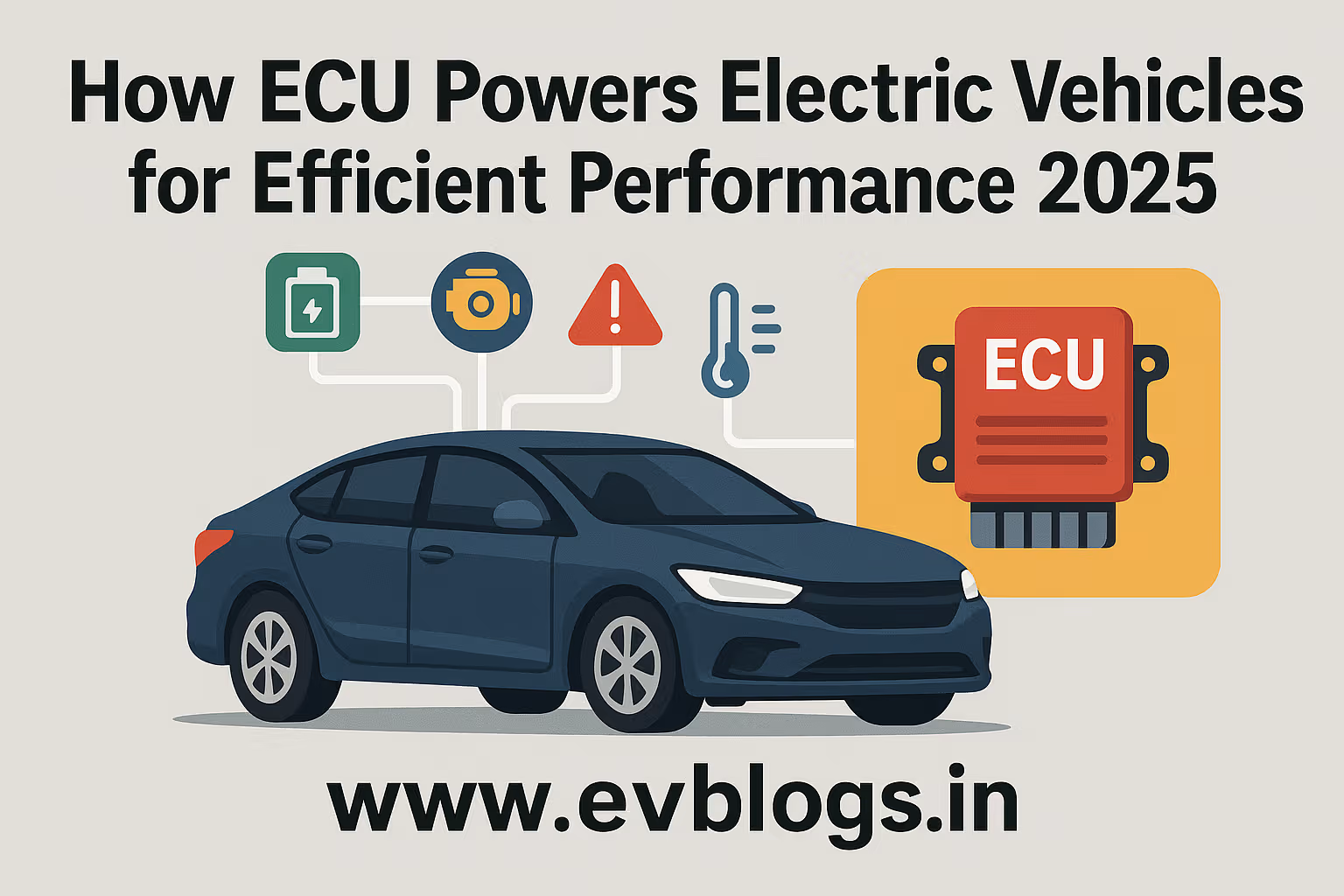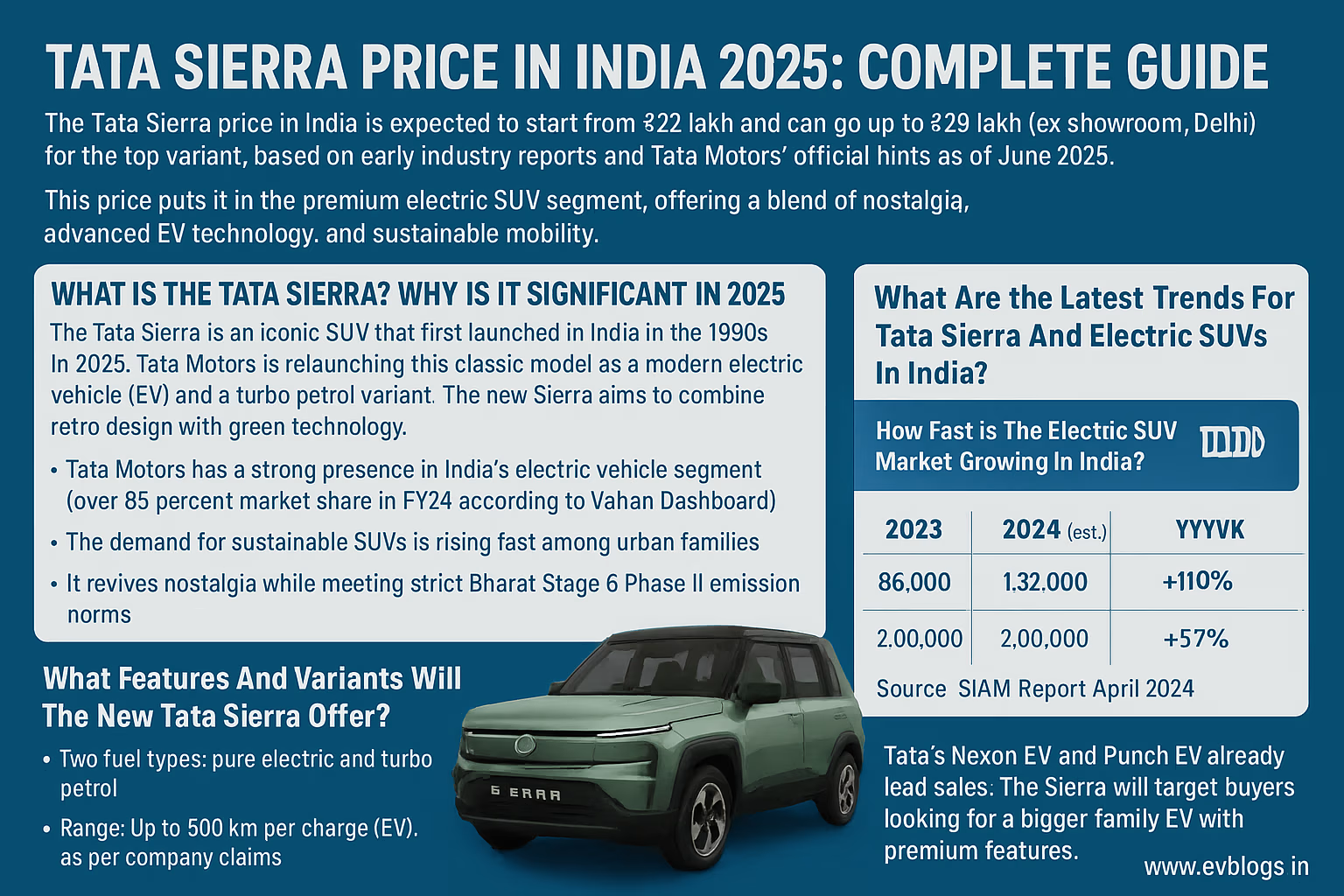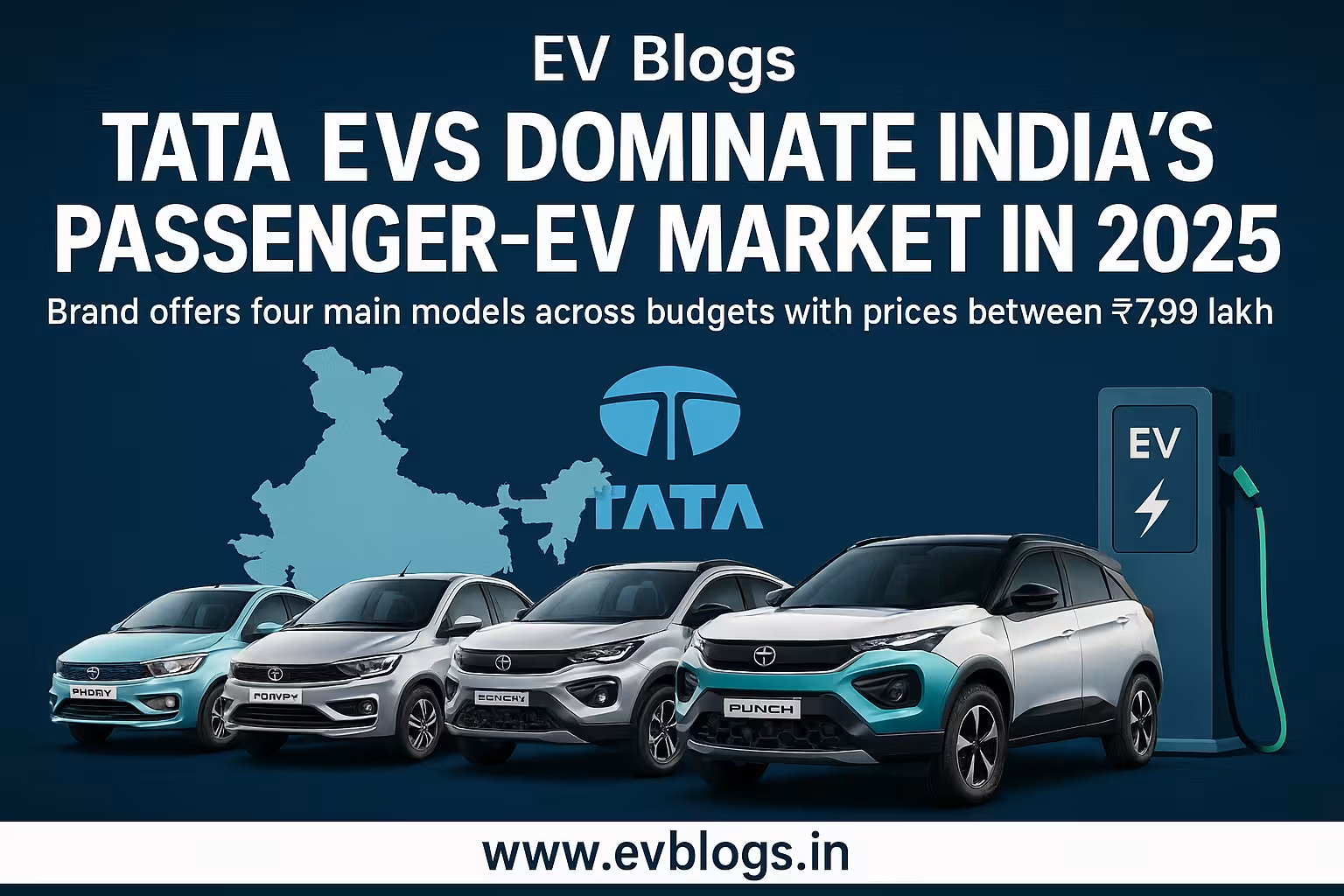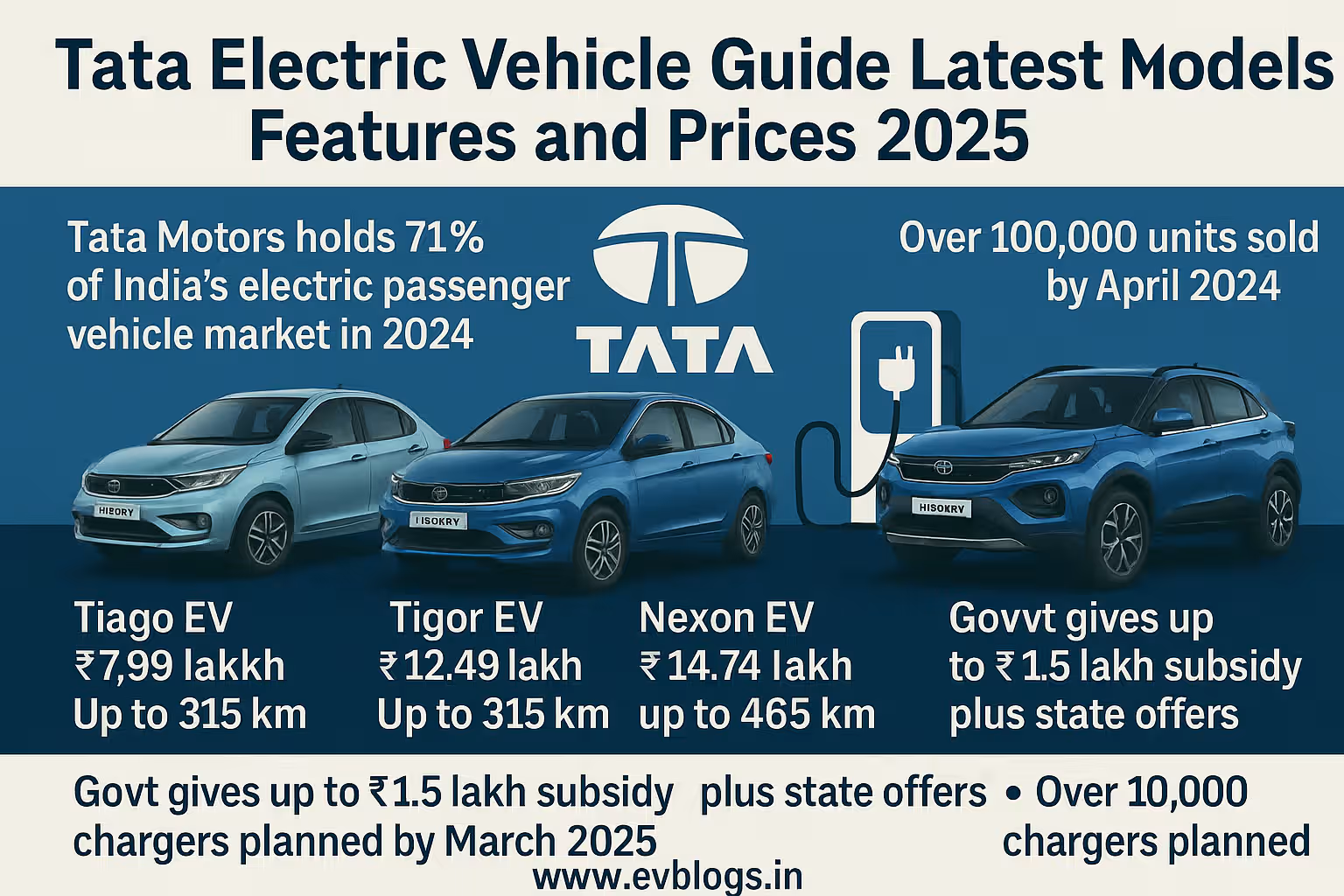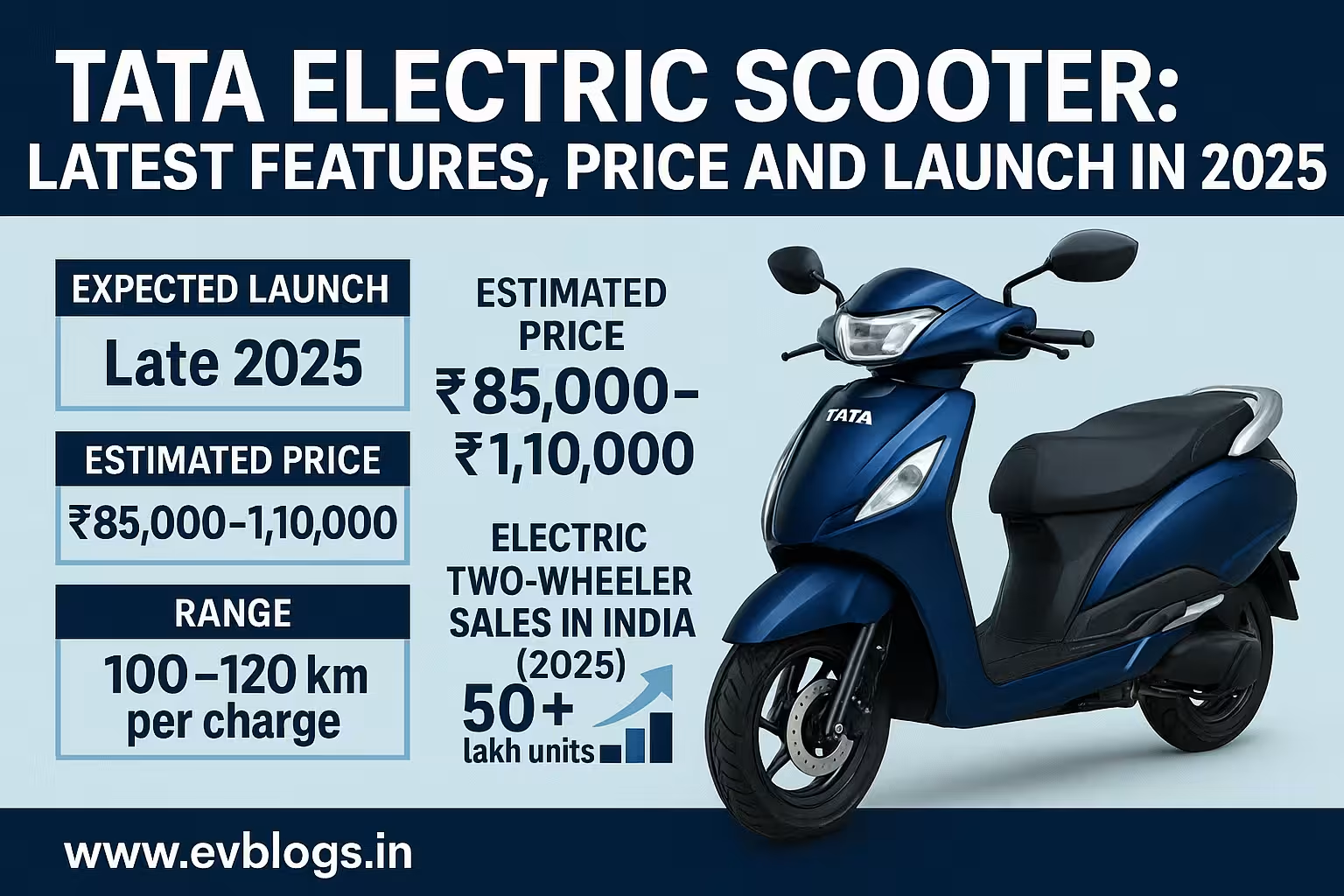Hedhvick Hirav
Hedhvick Hirav is a dedicated EV researcher and editor with over 4 years of experience in India’s growing electric vehicle ecosystem. Their contributions have been recognized in leading sustainability publications and automotive journals.
Summarize & analyze this article with
Choose an AI assistant and open this article directly:
Tip: if the AI doesn’t fetch the page automatically, paste the article URL manually.

What is the EV Battery Replacement Cost in India (2025)?
If you’re thinking about switching to an electric vehicle or already own one, you might be wondering about the EV battery replacement cost in India (2025). As the backbone of any electric vehicle, the battery pack is the most expensive part to replace. The price you pay depends on the make, model, battery type, and the battery’s size (kWh), but understanding these details helps you make an informed and confident EV decision.
In 2025, battery technology is improving fast, but replacement costs are still a big concern for many Indian users. For commonly used EVs in India, replacement costs can range from ₹65,000 for smaller two-wheelers to over ₹5,00,000 for premium four-wheelers. These prices are influenced by local manufacturing, government policies, and international market trends.
- For two-wheelers like Ola S1 Pro and Ather 450X, batteries cost between ₹60,000 to ₹90,000.
- For cars like Tata Nexon EV or MG ZS EV, expect costs from ₹2,50,000 to ₹6,00,000, depending on the size and type (Lithium-ion NMC or LFP).
- Battery costs are gradually falling, but they still form about 35-50% of the EV’s price.
Let’s break down everything you need to know in 2025 about EV battery replacement costs in India.
Did You Know?
According to NITI Aayog’s latest report (2025), India’s average EV battery prices have dropped by 12% each year since 2020, mainly due to local manufacturing and improved recycling processes.
Why Do EV Batteries Need Replacement in India?
You might assume EV batteries last forever, but just like your mobile phone, their capacity decreases with age and use. Here’s why you’ll eventually need a battery replacement:
- Battery Degradation: Over time, charging and discharging cycles reduce a battery’s capacity, leading to shorter driving range.
- Manufacturer Warranty: Most Indian EV brands offer battery warranties between 5 to 8 years or up to 1,60,000 km. After this, performance may drop significantly.
- Environmental Factors: High Indian temperatures and rough roads can speed up battery wear.
- Charging Habits: Frequent fast charging or charging to 100% can reduce battery life.
Typical battery replacement is needed after 6-8 years or 1,00,000 - 1,50,000 km, depending on how you use and care for your EV.
- Battery lifespan varies by vehicle and user habits.
- Replacement might be sooner if you notice sudden range drops.
- Using certified service centers is crucial for safety and warranty.
Which Indian EV Brands Have the Lowest Battery Replacement Cost in 2025?
If you’re budget-conscious, knowing which brands offer affordable battery replacements makes a big difference. Here’s a comparison of major players in the Indian EV market in 2025:
| Brand/Model | Vehicle Type | Battery Size (kWh) | Avg. Replacement Cost (₹) | Warranty (Years/km) | Battery Chemistry |
|---|---|---|---|---|---|
| Tata Nexon EV | Car | 30.2 | 3,20,000 | 8/1,60,000 | LFP |
| MG ZS EV | Car | 50.3 | 5,80,000 | 8/1,50,000 | NMC |
| Mahindra XUV400 | Car | 39.4 | 4,10,000 | 8/1,50,000 | LFP |
| BYD Atto 3 | Car | 60.5 | 6,00,000 | 8/1,50,000 | Blade Battery |
| Hyundai Ioniq 5 | Car | 72.6 | 7,20,000 | 8/1,60,000 | NMC |
| Ola S1 Pro | Scooter | 4.0 | 84,000 | 5/60,000 | NMC |
| Ather 450X | Scooter | 3.7 | 83,500 | 5/60,000 | NMC |
| TVS iQube | Scooter | 3.04 | 65,000 | 5/50,000 | LFP |
| Bajaj Chetak | Scooter | 3.0 | 70,000 | 3/50,000 | NMC |
| Hero Vida V1 Pro | Scooter | 3.94 | 78,000 | 5/70,000 | LFP |
| Tata Tiago EV | Car | 24 | 2,40,000 | 8/1,60,000 | LFP |
In-depth Battery Replacement Cost Details
- Tata Nexon EV: One of India’s most popular EVs, replacement cost in 2025 is around ₹3.2 lakh, with the best-in-class 8-year warranty.
- MG ZS EV: Uses a bigger NMC battery; expect a higher replacement price of nearly ₹5.8 lakh.
- Ather 450X: Premium scooter with an NMC battery, replacement cost is ₹83,500, and the warranty covers 5 years.
- TVS iQube: Affordable, widely available, battery cost is lowest among scooters at ₹65,000.
Expert Insight
Most Indian users find Tata’s LFP batteries last longer and are more tolerant to Indian conditions compared to NMC ones, slightly reducing long-term costs.
How Does EV Battery Replacement Cost Compare to Petrol/Diesel Vehicles in India?
Thinking about the long-term costs? Here’s how EV battery replacement stacks up against traditional vehicles:
- Fuel Cost Savings: Even after accounting for battery replacement every 7-8 years, EVs save you ₹1.5 – ₹2 lakh in fuel costs compared to petrol cars.
- Maintenance: EVs have fewer moving parts, so you spend less on maintenance.
- Resale Value: A replaced EV battery can boost the resale value of your EV, similar to an engine overhaul in petrol cars.
- Environmental Benefits: Lower carbon footprint and pollution compared to petrol/diesel vehicles.
| Cost Type | Petrol/Diesel Car (8 Years) | EV with Battery Replacement (8 Years) |
|---|---|---|
| Fuel/Charging Cost | ₹4,00,000 | ₹1,00,000 |
| Major Service/Parts | ₹1,20,000 | ₹40,000 |
| Engine/Battery | ₹0 (engine lasts longer) | ₹3,00,000 (battery replace) |
| Total | ₹5,20,000 | ₹4,40,000 |
- Even after battery replacement, EVs can be more cost-effective over 8 years.
When Is the Right Time to Replace Your EV Battery in India?
You might wonder: “Should I replace my EV battery at the first sign of trouble, or can I wait?” Here are the signs and situations indicating when replacement is due:
Noticeable Drop in Range: If your EV’s range falls below 70% of the original, it’s time to think about replacement.
End of Warranty Period: After 5-8 years, as soon as you cross the warranty km, battery efficiency may decrease quickly.
Charging Issues: Longer charging times or batteries not holding charge are warning signs.
Dashboard Warnings: Most new EVs alert you when battery health is poor.
It’s best to replace before the battery fails completely to avoid being stranded.
Shop for replacements at authorized service centers for safety and warranty protection.
Regular battery health checks (available at most dealerships) help you plan ahead.
What Factors Affect EV Battery Replacement Cost in India (2025)?
Battery costs in India are shaped by multiple factors, and knowing these can help you budget better:
Battery Chemistry: LFP batteries are cheaper and more durable. NMC batteries are lighter and give more range but cost more.
Battery Size (kWh): Larger batteries cost more. Small scooters use 3-4 kWh, electric SUVs may use 40-80 kWh.
Import Duties: Imported batteries attract 18-28% GST and customs duties, increasing the price.
Local Manufacturing: “Make in India” policies are lowering costs for Indian-made batteries.
Labor and Installation: Service center charges for battery removal and installation vary but are usually ₹5,000 – ₹20,000.
Warranty Coverage: If your battery fails within warranty, replacement may be free or heavily discounted.
Government subsidy schemes can reduce effective costs.
Prices may vary between metro and non-metro cities due to logistics.
New technologies like solid-state batteries may arrive by late 2025, but will initially be expensive.
Did You Know?
By mid-2025, over 60% of EV batteries sold in India are locally assembled, significantly reducing replacement costs compared to imported ones.
How Can You Extend the Life of Your EV Battery in Indian Conditions?
You can delay battery replacement and save money by following best practices that suit India’s climate and usage:
Keep Battery Cool: Park in the shade, avoid direct sunlight especially in summers.
Smart Charging: Avoid frequent fast charging; use slow charging when possible.
Partial Charging: Keep battery charge between 20% and 80% for daily use, instead of topping up to 100% every time.
Regular Servicing: Get battery health checked every 6 months at authorized centers.
Update Vehicle Software: Manufacturers often release updates to improve battery management.
Avoid Deep Discharge: Don’t let battery drain to 0% often.
Use original chargers and only visit authorized service centers for repairs.
Monitor the vehicle’s battery health dashboard regularly.
Which Are the Most Affordable EVs to Own in India Considering Battery Replacement?
If you are looking for EVs with the lowest total cost of ownership (including battery replacement), these Indian models stand out in 2025:
| Model | Upfront Cost (₹) | Battery Replacement (₹) | Total 8-Year Cost (₹) | Range (km/full charge) |
|---|---|---|---|---|
| Tata Tiago EV | 8,49,000 | 2,40,000 | 10,89,000 | 250 |
| TVS iQube | 1,60,000 | 65,000 | 2,25,000 | 100 |
| Ola S1 Pro | 1,30,000 | 84,000 | 2,14,000 | 181 |
| Tata Nexon EV | 14,99,000 | 3,20,000 | 18,19,000 | 312 |
| Mahindra XUV400 | 15,99,000 | 4,10,000 | 20,09,000 | 375 |
Details of Top Affordable Models
- Tata Tiago EV: India’s most affordable electric car, with the lowest total 8-year cost for four-wheelers.
- TVS iQube & Ola S1 Pro: Among scooters, TVS iQube has cheapest battery replacement, but Ola S1 Pro offers more features for a slightly higher cost.
- Tata Nexon EV: Best value for money in the SUV segment, with competitive battery replacement cost.
Expert Insight
For city users, electric scooters like TVS iQube and Ola S1 Pro offer the quickest payback period, usually within 3-4 years, even after battery replacement.
What Government Policies Affect EV Battery Replacement Cost in 2025?
India’s EV ecosystem is shaped by several government policies in 2025 designed to make battery replacements more affordable:
FAME III Subsidy: Partial subsidies on replacement batteries for vehicles bought under FAME II/III.
GST Reduction: GST on EV batteries remains at 5%, lower than 18% for conventional auto parts.
Battery Recycling Mandate: New rules encourage recycling old batteries, with discounts for users who return their old packs.
Production Linked Incentive (PLI): Local battery manufacturing is incentivized, reducing end-user replacement cost.
Swappable Battery Policy: For 2- and 3-wheelers, battery swapping networks reduce upfront replacement costs.
State subsidies (Delhi, Maharashtra, Tamil Nadu) offer additional incentives or rebates.
No additional road tax or registration fee for battery replacement in most states.
Did You Know?
In 2025, returning your EV battery for recycling can earn you a cashback of ₹12,000 – ₹20,000 from authorized dealers, lowering your replacement cost even further.
How to Choose the Right Replacement Battery for Your EV in India?
Replacement battery selection isn’t just about price — it’s about compatibility, safety, and performance. Here’s what to check:
Original Equipment Manufacturer (OEM): Always prefer OEM batteries for long-term reliability.
Battery Chemistry Match: Replace with the same type (LFP/NMC) as recommended by your vehicle manufacturer.
Warranty: Look for batteries with at least a 3-year warranty, even for replacement units.
Authorized Service Centers: Use only authorized centers to maintain warranty and safety.
Compatibility: Battery software and connectors must match your EV’s system.
Avoid refurbished or grey market batteries — they may be cheaper but are unsafe and void warranties.
Ask for a battery health certificate and installation documentation.
How Are Used EV Battery Replacements and Recycling Handled in India?
When your old EV battery reaches end-of-life, proper recycling is essential for safety and the environment:
Battery Collection Network: Most brands in India collect used batteries at service centers.
Recycling Facilities: India now has over 25 major lithium-ion battery recycling plants (in 2025), where metals like cobalt and lithium are recovered.
Second Life Applications: Some used EV batteries are refurbished for use in solar storage or backup power banks.
User Incentives: Many OEMs offer cashback or discounts when you return your old battery.
Dumping or mishandling lithium-ion batteries is strictly prohibited and fined as per 2025 CPCB norms.
Ask your dealer for recycling proof to ensure environmental compliance.
Expert Insight
Over 80% of EV batteries in India are now recycled or reused, reducing both environmental impact and raw material costs for new batteries.
What Are Real-World Experiences of Indian EV Owners with Battery Replacement?
Hearing directly from fellow Indian users gives you the clearest picture of what to expect:
- Divya, Tata Nexon EV Owner (Bangalore): “After 6 years and 1,20,000 km, my range dropped to 70%. Tata replaced my battery under warranty — zero cost, quick process, and my car feels new again!”
- Rahul, Ola S1 Pro Owner (Delhi): “I crossed 50,000 km in four years. Ola quoted ₹78,000 for a new battery. With cashback for my old battery, the net cost was ₹65,000. No issues so far.”
- Akash, Mahindra XUV400 Owner (Mumbai): “Battery degraded by 17% in five years. Mahindra’s service center quoted ₹4 lakh, but with the state subsidy and recycling return, I paid ₹3.6 lakh.”
- Priya, Ather 450X Owner (Chennai): “I use my scooter daily for office. Battery health check every 6 months helped me plan for timely replacement. Service experience was smooth.”
Common user themes:
- Battery replacement process is faster and smoother at authorized centers.
- Returning your old battery for recycling saves money.
- Most users find cost manageable when planned ahead and with government subsidies.
How to Plan and Budget for EV Battery Replacement in 2025?
Ensuring you’re financially ready for battery replacement is vital for stress-free EV ownership:
- Check Warranty Terms: Know the year/km coverage upfront.
- Set Aside Savings: Start a “Battery Fund” from the beginning — even ₹500/month is helpful.
- Monitor Battery Health: Regular health checks help you predict replacement timing.
- Research Government Schemes: Track state and central offers to lower costs.
- Consider EMI/Finance Plans: Many OEMs offer finance schemes for battery replacement.
Budgeting tips:
- If you drive less than 10,000 km/year, your battery may last longer, but still set aside funds.
- Factor in recycling cashback/incentives while planning your replacement budget.
- Maintenance and software updates may reduce or delay your need for replacement.
Did You Know?
In 2025, more banks and NBFCs are offering zero-interest EMI plans for major EV battery replacements, making it easier for Indian users to manage costs.
Final Verdict: Is EV Battery Replacement in India (2025) Worth It?
After looking at all the facts, statistics, and real-life Indian experiences, here’s what matters most for you:
- Lower Lifetime Costs: Even after accounting for battery replacement, Indian EVs (especially two-wheelers and mass-market cars) offer you significant savings compared to petrol/diesel vehicles.
- Improved Technology: Battery costs are steadily dropping thanks to local manufacturing and recycling, making replacements more affordable every year.
- Government Support: National and state policies, subsidies, and recycling incentives make battery replacement less of a financial burden than ever before.
- User-Friendly Process: Most Indian EV brands handle replacement and recycling efficiently, with minimal downtime for users.
If you plan ahead, take care of your battery, and use available subsidies and recycling options, EV battery replacement in India (2025) is manageable and should not stop you from choosing electric. For most Indian users, the benefits — cost savings, less maintenance, and environmental impact — clearly outweigh the concerns around replacement costs.
FAQs on EV Battery Replacement Cost in India (2025)
Q1: Can I get my EV battery replaced at a local garage?
No, always use authorized service centers to maintain warranty and ensure safety.
Q2: What happens to my old EV battery after replacement?
It is sent to a certified recycling facility. You may get cashback or a discount for returning it.
Q3: Are there EMI or finance options for battery replacement in India (2025)?
Yes, several OEMs and banks offer EMI plans specifically for battery replacements.
Q4: How long does it take to replace an EV battery in India?
Usually 3-5 hours for cars, 1-2 hours for scooters, provided the part is in stock.
Q5: Does battery replacement restart my vehicle’s warranty?
No, the vehicle warranty remains unchanged, but most new batteries come with a separate warranty (3-5 years).
If you’re considering an electric vehicle in India for 2025, understanding battery replacement costs, planning ahead, and using the available resources will help you make the smartest, most cost-effective decision for the road ahead.


